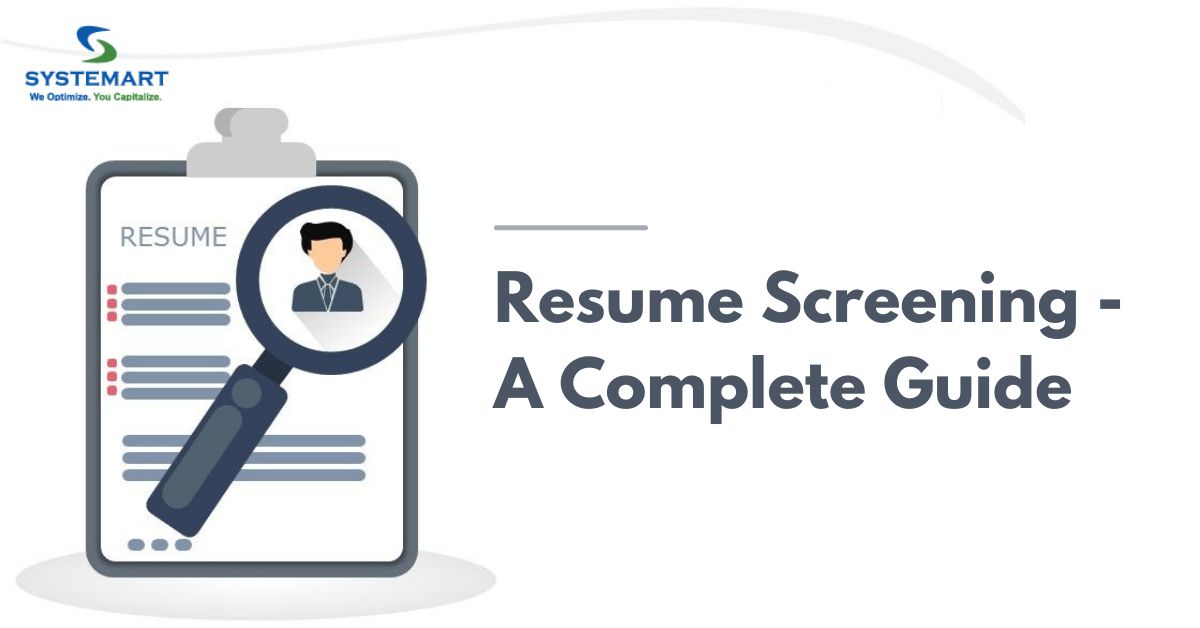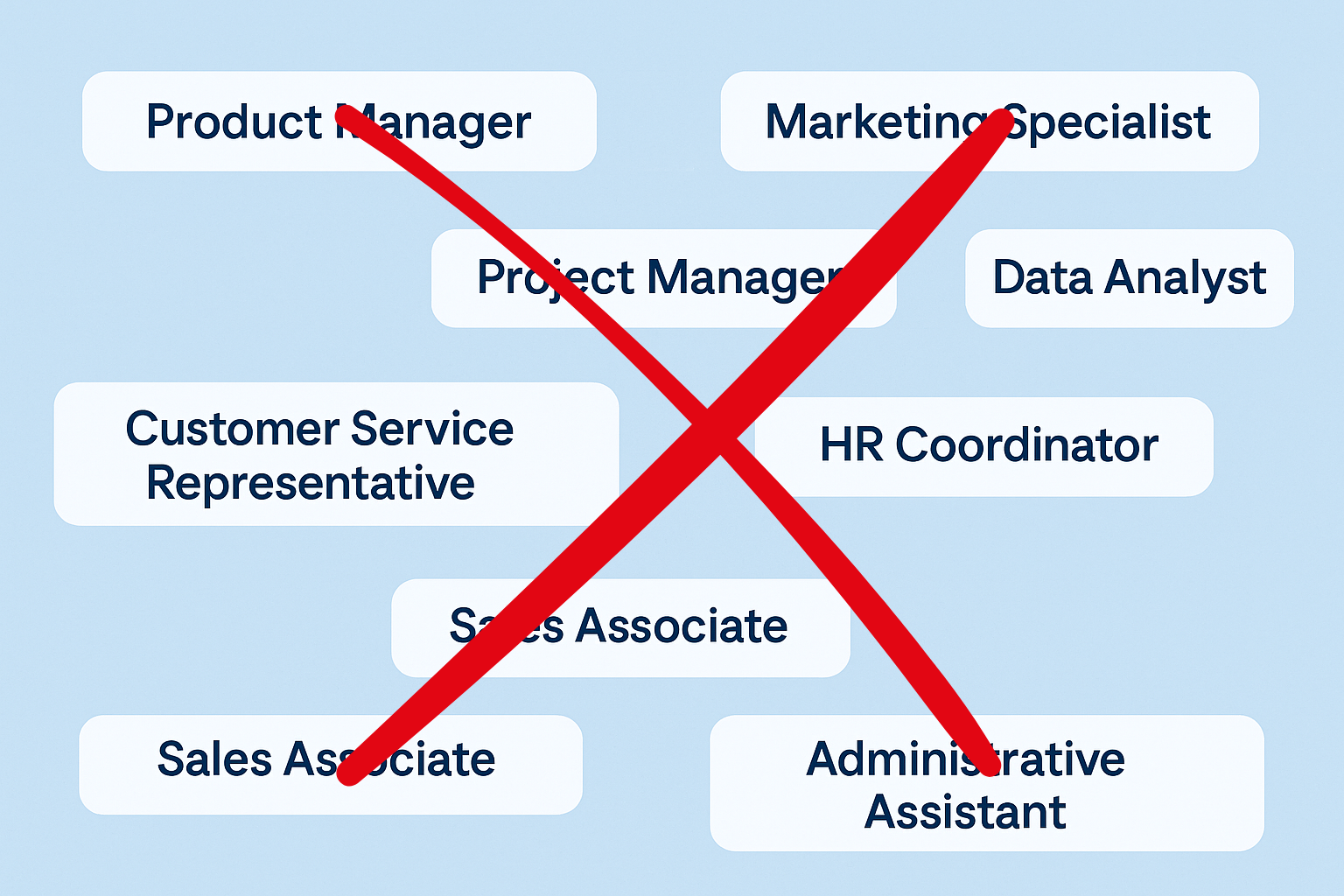Recruitment of new employees can be a long, drawn-out, and difficult process, which all companies have to go through regularly. Hiring new and efficient employees is a task of utmost importance and a lot of effort, thought, time, and money are invested into it. Whenever an advertisement for a new job is posted, a large number of people apply to it. Among this large number, there are a lot of people who are not eligible or qualified for the post. According to a survey, a job opening receives around 250 resumes on average, among which, around 75% to 85% are underqualified. Resume Screening refers to the process of eliminating or removing these ineligible candidates from the list of potential candidates by looking through their Curriculum Vitaes. In some cases, Recruiters go through the CVs themselves, and in others; they use software that has been designed specifically for this purpose. In manual reviewing, the recruiters go through each resume one by one, accessing the level of education, skills, and experience mentioned, to decide whether or not a person is eligible for the job. Manual reviewing is widely used and is more accurate because a potential employee may not have used some specific keywords for their skills in their resume, even though they are highly qualified, and the Resume parsing software will not clear them for the next round. There are many aspects of a resume that only a real person, especially a professional resume writer, may be able to notice and gauge. These details can be the deciding factor when it comes to whether or not the person is suitable for the job. Resume Parsing software is based on Artificial intelligence. It goes through the resumes and separates the eligible ones from the ineligible ones through the use of keywords. These specific keywords may be related to the education, experience, or skills of the potential employee and help the software decide whether or not the person is eligible for the job. Using screening software or going through the resumes manually depends upon the recruiter, their budget, time frame, number of resumes received, and the number of positions available for a job. A company, by looking at its resources and all these aforementioned aspects, decides which route it should take. Resume parsing software is generally faster and more efficient as the software can skim through the resumes for keywords at a much faster rate. Manual screening on the other hand can be more accurate as the recruiter can personally decide whether or not a person is eligible and has the required skills and experience to join their company. Screening resumes can be a very long and difficult process. Here are a few basic steps of screening resumes: The first and most important thing to look at whilst screening resumes is the education of the potential employee. A certain level of education in a certain field is the requirement of most jobs and it is the factor that eliminates the most candidates. People can polish skills and gain experience over time but gaining formal education and a degree takes a lot of time and effort and is not something that the employer can just ignore. Experience is the second most important factor. Certain employers want employees who have worked in the field before and are familiar with the workings and operations. While screening resumes, it is best to eliminate anyone who does not have the required amount of experience for the job. Skills are very important when it comes to qualifying for a job. Certain jobs require certain skills that the employee needs to have. In some cases having an extra skill or two can prove to be just the edge a candidate needs to get ahead of everyone else in the recruitment process. A CV that has been customized specifically for a job shows the amount of dedication the candidate has and that they have done their research about the company and the position. Skillset matching the required skills, job history relevant to the post, and achievements in the relevant field mentioned in the CV show that it has been customized for the job. It leaves a very good impression on the employer and increases the chances of the candidate getting hired. There are some very common red flags that a potential employer must look for while screening resumes ensuring that they do not hire an employee that will not stay long term or will not benefit the company in the long run. Given below are a few of these common red flags: While looking through resumes, it is better to look for any gaps between their work histories. Many people have large gaps between their jobs for many reasons like military service, starting a family, or taking care of a loved one, which is completely reasonable. The candidate should mention those reasons for the gaps in their resume. Any unexplained gap is usually a bad sign. Having a long work history can prove to be very beneficial when looking for new jobs but it can also be a setback. If a person has mentioned a lot of previous working experience but they all have very short spans, then it means that the candidate has commitment problems and will not stay long with your company either. Not attaching a cover letter with the resume isn’t a good enough reason to disqualify someone from a job, but it is a valid enough reason to give preference to those who have submitted their Cover letters over those who haven’t. To put it simply, while screening resumes, it is best to look at education, experience, and skills, in that very order. These will help you narrow down the list of potential candidates. Another look for any red flags in the Resumes will further shorten the long list of potential candidates for a job opening.There are two basic types of Resume Screenings:
Manual Reviewing:
Screening Software:
How to screen resumes:
Education:
Experience:
Skills:
Customized Resumes:
Red Flags:
Unexplained Gaps in Employment:
Short Tenures:
No Cover Letter:
Resume Screening - A Complete Guide

Recent Articles

24-Dec-2025
Looking Back at 2025: Gratitude, Grit, and a ...
As 2025 ends, it feels less like an ending and more like a pause. A moment to breathe and reflect. A moment to look around. A moment to acknowledge th...

08-Dec-2025
The End of Job Titles: Why Skills, Outputs, a...
Recently, a business column made an unusual observation - several Fortune 500 companies quietly removed 40+ job titles from their internal systems. Ti...

17-Nov-2025
Hiring For Energy And Outcomes Over Culture F...
This week a headline made the rounds in HR circles: companies are retiring “culture fit” and switching to “culture add.” Their argument is, hi...
